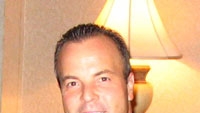New advocacy group seeks freedom from 8VSB modulation for DTV broadcasters

If you thought the ATSC standard in general, 8VSB modulation in particular and the recently adopted ATSC A153 Mobile DTV standard were final chapters in over-the-air TV broadcasting in the United States, you might want to think again.
SpectrumEvolution.org, a new advocacy group led by LPTV-industry veterans Greg Herman and Amy Brown, says it’s time to unleash the full entrepreneurial potential of U.S. TV broadcasters by allowing them to employ more efficient forms of signal modulation. Giving broadcasters that freedom would let them play an important role in offering broadband wireless services to their communities, they say.
“We are now sitting atop a situation where in all fairness, ATSC is not in any way, shape or form a state-of-the-art modulation scheme,” says Herman, who is serving as president of the group.
In the view of SpectrumEvolution.org, the ATSC standard is a serious impediment to letting all U.S. TV broadcasters — full power, low power, Class A and translator stations — realize their full business potential.
“We want to be given the opportunity to participate fully in providing broadband as an industry and be unshackled and unleashed to use state-of-the-art modulation techniques to do it,” Herman says.
Many newer modulation schemes, including OFDM and OFCMA, which is being deployed inside LTE and WiMAX wireless networks, “are simply superior,” Herman says.
The concept of a laissez faire approach to TV modulation raises an obvious question: After the delays, inconvenience to the public and the billions of dollars of expense for DTV converter boxes to complete the transition from NTSC to ATSC-based DTV in the United States, is it realistic to think lawmakers, regulators and the public will get onboard?
Get the TV Tech Newsletter
The professional video industry's #1 source for news, trends and product and tech information. Sign up below.
SpectrumEvolution.org thinks so. According to Herman, in mid-October the group had a productive meeting with FCC employees to lay out its vision, and following the meeting FCC chairman Julius Genachowski was quoted in the “Washington Post” as saying that he will propose lifting technical barriers so that spectrum licensed to broadcasters can be used more easily for fixed or mobile broadband. Whether or not that means broadcasters have a shot at providing that service is unclear, however.
As for over-the-air television viewers, Herman envisions a range of solutions from “low cost to no cost” to allow them to receive digital television using a different modulation scheme. “Realistically, receive devices on the international scene are as cheap as $20,” Herman says. “Assuming an advertising model, a $20 device is nothing.”
And what about the billions of dollars the government envisions flooding into its coffers from the auction of 120MHz of broadcast spectrum to wireless telecommunications companies eager to launch wireless broadband service in the TV band? Allowing broadcasters to offer broadband instead can’t be financially appealing to the government.
Not necessarily, Herman says. TV broadcasters pay the government a 5 percent spectrum use fee. Rather than collecting a onetime lump sum from a spectrum auction, the government would receive what amounts to an annuity from broadcasters, whose revenue from spectrum use would soar if they were allowed to offer wireless broadband service.
Freeing broadcasters to make the best, fullest use of their spectrum by unlocking them from regulations mandating ATSC and 8VSB modulation is the right solution for consumers, TV broadcasters and the government, Herman says. It also lets policymakers sidestep the need to reclaim 120MHz of broadcast spectrum —something that places an unfair burden on the industry, he adds.
“The reality is broadcasters have given at the blood bank twice. We have compressed from 83 to 69 and now 69 to 51. And you know what? I think that’s enough,” Herman says. “We should allow innovators in that space to innovate, and give them the tools to do it through flexible use of spectrum.”
Phil Kurz is a contributing editor to TV Tech. He has written about TV and video technology for more than 30 years and served as editor of three leading industry magazines. He earned a Bachelor of Journalism and a Master’s Degree in Journalism from the University of Missouri-Columbia School of Journalism.

